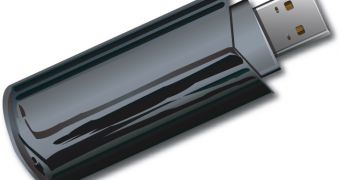Since I got my first computer, ten years ago, a continuous nightmare haunted me. No matter how great my new computer was I always heard: "for that video game you will need XXX MB of RAM". The technology was one-step ahead of my upgrade capability. Of course, you might say I am paranoiac about upgrading my computer with extra RAM but this issue depends on what are you doing with your own computer. If you plan to use it only for office applications, to play videos and mp3 files, then 512MB for XP and 1024 MB (1GB) for Vista will do it.
For someone like me, ready to install all the applications in the world, from common system utilities to powerful memory eaters like Adobe Photoshop or latest games, the RAM already installed on the computer is never enough. Or, if it?s enough there is also room for extra RAM. When I heard Microsoft will release a new OS (Vista) hungry for system resources I was thunderstruck. Imagine someone like me ? already obsessed with RAM requirements ? looking at an operating system that asked for more RAM than a pretentious game. Though one particular feature got my attention: the ReadyBoost.
This revolutionary feature implemented by Microsoft?s engineers into Windows Vista changed the perception upon the idea of upgrading the computer with extra memory. Technically, anyone in possession of a flash drive (non-volatile flash memory) can use it as an additional memory cache. Once Vista has been instructed to use the flash pen, it will place a copy of the virtual memory on the stick for quick access.
The virtual memory saved on the flash drive is encrypted using the AES-128 algorithm in order to prevent unauthorized access in case the stick is removed from the USB port. Theoretically, the access time of a flash memory compared to HDDs is lower, which means the virtual memory saved on the flash pen can be more rapidly accessed by the operating system. Microsoft states that this implies significant chances for the system responsiveness to be improved. Well, the explanation sounds great even if there is no actual RAM increase involved. However, a paranoiac and reticent person like me needs more proofs to embrace this idea. For this reason, I have decided to do a homemade benchmark and see whether this feature is efficient or it is just an eye-catchy marketing technique.
Here is the configuration of the system running Vista:
AMD Athlon 64 3000 + HDD ATA 80 GB 1024 MB RAM dual channel 400 MHz ATI x1300 PCI Express 256 MB
The USB flash drive used:
To do the test I have prepared two USB flash pens: the USB Data Traveler Kingston 1GB and the Sandisk USB Cruzer Micro U3 Sandisk 4GB. The first stick has been immediately recognized by Windows Vista but when I checked the ReadyBoost feature I got the following message: "The device does not have the required performance characteristics for use in speeding up your system". Consequently, Kingston?s product is out. (this model only) What a shame!
The latter, Sandisk?s Cruzer, was good enough for Vista, therefore it has been accepted to work with ReadyBoost. Once the device inserted in the USB port, the autoplay menu provides us with two options: "open folder to view files" and "Speed up my system using Windows ReadyBoost".
Of course, if you don?t want to use your stick as a system "slave" you have the freedom not to use the feature, while clicking on "Speed up my system using Windows ReadyBoost" you are allowing Vista to "expand" outside the computer on the mobile flash drive.
In order to avoid the same trouble as the one I experienced, you should initially verify whether the USB stick you have or you intend to buy meets the following ReadyBoost requirements:
? Minimum capacity of 256 MB (250 after formatting) ? At least 1ms access time ? The USB or the memory card has to be capable of 2.5 MB/s read speeds for 4 KB random reads spread uniformly across the entire device and 1.75 MB/s write speeds for 512 KB random writes spread uniformly across the device ? No matter what storage space it offers the drive must have at least 235 MB of free space ? It has to be NTFS and FAT32 formatted
How I tested it
To see if theory and practice go hand in glove I chose to measure the loading time for Adobe Photoshop 8.0. Initially, I wanted to test the Office 2007 suite too, but due to the tiny loading time, I abandoned the idea (Word 2007, Access 2007 and Excel 2007 loads in about 1-2 seconds).
The results:
So, first I launched Adobe Photoshop 8.0 with the ReadyBoost feature disabled (no flash drive attached to the system) to see how much times it requires to load.
First launch: loaded in 25 seconds
Second launch: loaded in 22 seconds
Third launch: loaded in 6 seconds
After I connected the Sandisk USB Cruzer Micro U3 Sandisk 4GB and reserved 1GB of its space for ReadyBoost the results changed a little bit:
First launch: loaded in 16 seconds
Second launch: loaded in 6 seconds
Third launch: loaded in 4 seconds
As you can see, there are improvements regarding the loading time. Technically, the loading average time for Adobe Photoshop 8.0 was 17.66 seconds, while with the ReadyBoost feature enabled, it went down to 8.66 seconds. It may not be an amazing result, but for those with low RAM resources ReadyBoost could be a temporary solution.
My advice for you is not to buy flash memory pens or cards expecting to speed up the system, but rather purchase extra RAM because it will definitely bring more power, thus more speed. ReadyBoost is certainly not a myth and the benefits resulting of it may be irrelevant. So, use this feature if you happen to have an extra flash drive or memory card available.

 14 DAY TRIAL //
14 DAY TRIAL //